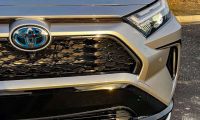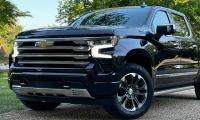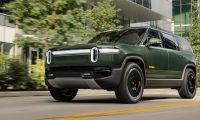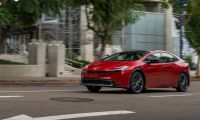Tesla FSD Is Far Ahead
We have a video from Dr. Know-it-all knows it all, that is discussing Tesla's FSD Beta software, and Tesla's FSD software for autonomous driving is much different than what is on the current market for vehicle autonomy. This had made many people believe that Tesla is in last place instead of first place. Let's take a look at why.
Tesla's solution is so different and so far ahead of the competition - and people actually believe that Tesla is last. Let's take a look at a CNBC video that is about Tesla's autonomous software, FSD Beta. There is a case being made for autonomy that it will never happen and never be profitable.
According to the leaderboard in the CNBC video, using a graphic that has been shown many times, the leaders in vehicle autonomy are:
* Waymo
* Mobileye
* Baidu
* Cruise
* Motional
* Nvidia
* Aurora
* Zoox
* WeRide
* Galtik
* AutoX
* Nuro
* May Mobility
* Autonomous A2Z
* Pony AI
* And much further down and last, Tesla
It's interesting that in the graphic, Mobileye has a much bigger font size than the other companies. The video calls Tesla kind of joke, and a Tesla always needs a human supervising it in order to drive. The video tries to convince the viewer that autonomous software is a fool's errand and a bad idea that will never happen.
Level Four Autonomy at Scale
Jim Farley, the CEO of Ford, has said that nobody has figured out how to get to level 4 autonomy and do it profitably. There are 5 levels of vehicle autonomy:
0: Warnings and momentary assistance (driver required)
1: Steering or brake acceleration support (driver required)
2: Steering and brake acceleration support (driver required)
3: Will drive the vehicle under limited conditions (driver not required unless requested)
4: Will drive the vehicle under limited conditions (no driver required)
5: Will drive the vehicle under all conditions (no driver required)
You may also be interested in:
- Owning a Tesla without home charging.
- Drone flight view of Tesla's stamping process at Giga Berlin.
- The staggering economics of the Tesla semi.
Experts Can't Understand It
The video talks about self-driving projects from big companies like Google and Amazon and that they can spend a lot of money on the projects, but that they can't progress and might be more of vanity projects.
Uber and Lyft are ride-sharing companies that lost a lot of money last year in autonomy research, according to the video. Earlier this year, Waymo and Cruise achieved 1 million driverless miles each, in various geo-fenced areas. That discounts the fact that there is a remote driver at all times for Waymo. It's undetermined if Cruise has this. There have been instances where a Cruise vehicle blocked traffic in San Francisco for a while. Still, it is true that the cars have driven without a driver in the driver's seat.
Cruise wants to achieve $1 billion in revenue by 2025. That would require 600,000 Robotaxis to make that happen. The cost is massive due to the Lidar and other equipment. 600,000 vehicles costs about $600 million.
If you are a fan of Tesla and its FSD Beta and autonomous software, let's break this down:
Jim Farley said nobody has a driverless vehicle software that can scale and be profitable. Tesla actually has a plan for this. Even right now, with its FSD software, Tesla is making money just on the upfront and monthly costs of FSD Beta. Many say that Tesla is simply selling the promise of it because it's not out of Beta yet.
Autonomy is Core to Tesla
Elon Musk has said that autonomy is core to Tesla. Tesla cares a great deal if autonomy works or not. It has been a very difficult project for Tesla and there have been many software updates. There have been many YouTube videos and mistakes shown as well - not every video shows a perfect drive.
Tesla is using neural nets all the way from image-space to vector-space now in its FSD Beta software, and this is a big deal. Tesla doesn't do PR or advertising, except on its Investor Day or quarterly earnings calls - or through its Twitter and social media accounts.
Tesla does not have LIDAR or a bunch of sensors on their vehicles. High definition radar with 8 to 12 cameras and low definition radar will be used by Tesla to drive their vehicles by themselves. The cost of all that equipment is low - a few thousand, as opposed to fifty thousand or more dollars for other vehicles.
Tesla's software understands objects and the world around it. Tesla is getting rid of a bunch of code that uses IF/ELSE statements, but that code is very brittle. The neural net doesn't function that way. The neural net makes decisions using probabilities. All the way from image space, which is the ability to turn pixels into a 3D animation, and to know what everything is and how fast it's moving and where it is moving. Tesla vehicles will be much more human-like using the neural net and probabilities because that is how a human thinks - in a reasoned manner.
Because of Tesla's lack of advertising and not trying to show their cars driving without a driver in order to advertise and make it look like Tesla is in the lead, along with the neural nets and vision/radar system, experts can't understand Tesla's FSD software. One day, it is just going to work way better than an average human, and even then, it will keep getting better and better.
Do you think Tesla FSD is in the lead, or is it in last place?
For more information, see this video from Dr. Know-it-all Knows it all:
In Related News: Elon Musk Gives Nod to Model 3 - Project Highland
Leave your comments below, share the article with friends and tweet it out to your followers.
Jeremy Johnson is a Tesla investor and supporter. He first invested in Tesla in 2017 after years of following Elon Musk and admiring his work ethic and intelligence. Since then, he's become a Tesla bull, covering anything about Tesla he can find, while also dabbling in other electric vehicle companies. Jeremy covers Tesla developments at Torque News. You can follow him on Twitter or LinkedIn to stay in touch and follow his Tesla news coverage on Torque News.













Comments
The delusional author is a
Permalink
The delusional author is a Muskite through and through.
The author is making the same
Permalink
The author is making the same cost argument against Lidar that people used to make about electric cars (and cell phones and computers and every new technology ever).
Check your math - you say…
Permalink
Check your math - you say 600k robotaxis would cost $600 million [$1k per taxi) and then later use a figure of $50k per vehicle.
Very confusing - doesn’t help your credibility.